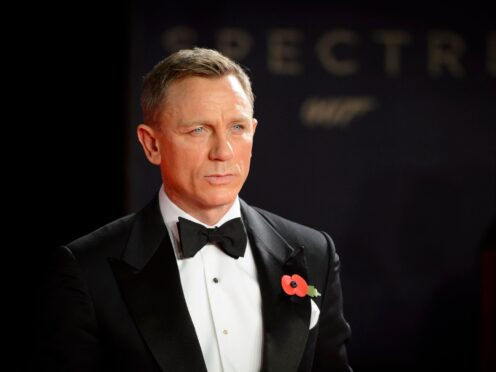Daniel Craig has ensured his farewell as 007 will stay long in the memory – by signing off with the longest James Bond film ever made.
No Time to Die runs for 163 minutes, according to production details published by the British Board of Film Classification (BBFC).
This makes it a quarter of an hour longer than the previous record-holder, Spectre, which was released in 2015 and ran for approximately 148 minutes.
It also means Craig will continue to have the honour of playing 007 in both the longest and shortest ever Bond films.
Quantum of Solace, his second outing as 007 in 2008, ran for just 102 minutes.

Played back-to-back, Craig’s five Bond films would run for a total of 701 minutes – or more than 11 and half hours.
This is longer than the combined running time of Sean Connery’s six official outings as 007 (697 minutes), but some way behind Roger Moore’s seven-film stint as Bond (889 minutes), according to analysis by the PA news agency of BBFC data.
The 007 films have swollen in size over the decades.
While Connery’s six films (released in 1962-67 and 1971) averaged a concise 116 minutes, Moore’s seven films (1973-85) averaged 127 minutes and Timothy Dalton’s two films (1987-89) an even longer 132 minutes.
The four films of Pierce Brosnan (1995-2002) saw the average drop to 125 minutes – but Daniel Craig’s five films as Bond (2006-21) have seen running times balloon to an average of 140 minutes.
The only film starring George Lazenby as James Bond, 1969’s On Her Majesty’s Secret Service, clocked in at 142 minutes.
This remained the longest-ever 007 film until Craig’s debut Casino Royale in 2006, which ran for 145 minutes.
Spectre in 2015 pushed the record to 148 minutes – and No Time to Die has now added a further 15 minutes.
Such an epic running time is perhaps a fitting tribute to an actor who has held the role of James Bond for more than 15 years: longer than anyone else.
But faced with a film that lasts well over two and a half hours, some cinemagoers may need to be shaken – never mind stirred – in their seats to stop themselves nodding off before the end.
No Time to Die opens in cinemas on Thursday September 30.
